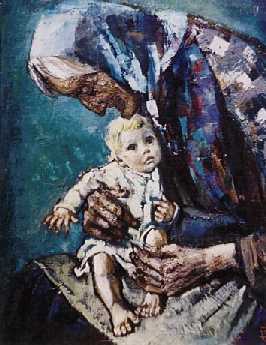
In response to Trevor Losh-Johnson:
I am pretty much at a loss when it comes to Spenser, though I should be better versed, given that Hawthorne was steeped in Spenser (he named his daughter Una) and seems to have regularly ripped off parts of The Faerie Queene (“mediocre writers borrow, great writers steal”), such as the Malbecco episode that he purloined for his story “Egotism, or the Bosom Serpent.” Maybe someone else can offer more help in that area.
From what I can tell, however, the lion here (C.S. Lewis’s lion Aslan, I guess, comes from Spenser) seems to be an emblematic symbol, allegorical, because linked to a conceptual framework for its meaning, rather than archetypal, and the transvaluation is purely contextual, as you outline: depending on whether it is associated with (British) regality, ferociousness, or savagery.
As to more general questions, here are some rough thoughts.
What you seem to be talking about is the centripetal connection between images and words that the reader makes as he reads and constructs the text: its internal structure. This is the literal level of meaning, as Frye defines it in Anatomy. The archetype, in contrast, involves the linking of a recurring image or, as Bob points out, a ritual story-pattern among works in literature as a whole, as a total centripetal organization of words.
In my Hawthorne example, the archetype of the “bride-garden” brings within its orbit and organizes an entire series of details and images in The Scarlet Letter, at the centre of which stands this Edenic image of the rose-bush. Another good example is the organizing of almost every detail of Whitman’s “Out of the Cradle Endlessly Rocking” (no, it is not a Chuck Berry tune) around the womb-tomb white goddess archetype, which is powerfully encapsulated in the haunting closing image of the sea, or death:
“( . . . like some old crone rocking the cradle, swathed in sweet
garments, bending aside,)
The sea whisper’d me.”
The recurring image should also be distinguished from allusion, the reference within a text to another text or texts, though allusion often links what may seem casual details to an organizing archetype. I emphasize to my students the importance of allusion and how, as Frye insists, in any writer of genius there are no idle or gratuitous, purely ornamental details.
I mentioned the Esau archetype. In Balzac’s Pere Goriot, the red hair that covers Vautrin’s body, which may seem at first blush simply a realistic detail, is in fact an allusion to a detail in the Genesis story, the fact that Esau’s body is covered with red hair; in fact Vautrin’s hair is described as a pelt (pelure in French), which alludes to another detail in the Genesis story: Esau is a hirsute hunter and so Jacob covers his own body with pelts to make his blind father Isaac mistake him for Esau and win his blessing. Elsewhere, Vautrin makes a number of allusions to Rousseau’s Social Contract. When he is finally captured, he defiantly declares himself a disciple of Rousseau and an admirer of his great political treatise. This detail falls into the orbit of the same archetype: Vautrin is someone who breaks with the social contract and sides with Nature and the strength and cunning of the natural man, and declares war on society, all of which reinforces and blends into the Esau archetype.
Another challenge is to show how archetypal meaning works in much more contemporary mimetic fiction like Updike’s Rabbit saga, or Richard Ford’s similar type of epic about an individual who is simply “one of us,” or Richard Price’s great novels about street life, police enforcement, and drug crime in urban America, or some of the great HBO series, such as Six Feet Under, The Sopranos, The Wire, and Mad Men. That these stories are so compelling suggests to me that there must be significant metaphorical and mythological structuring involved, however displaced. It would be of great interest, precisely because of their displacement and relative invisibility, to uncover the underlying elements of archetypal design that give such highly mimetic stories their power. It would also be worth exploring since it is these popular TV dramas that inevitably attract ideological criticism and are interpreted as critiques of ideology. If archetypal criticism is the foundation of literary criticism, it must be able to deal with imaginative works like these as effectively as it deals with more romantic and mythopoeic forms of literature.
